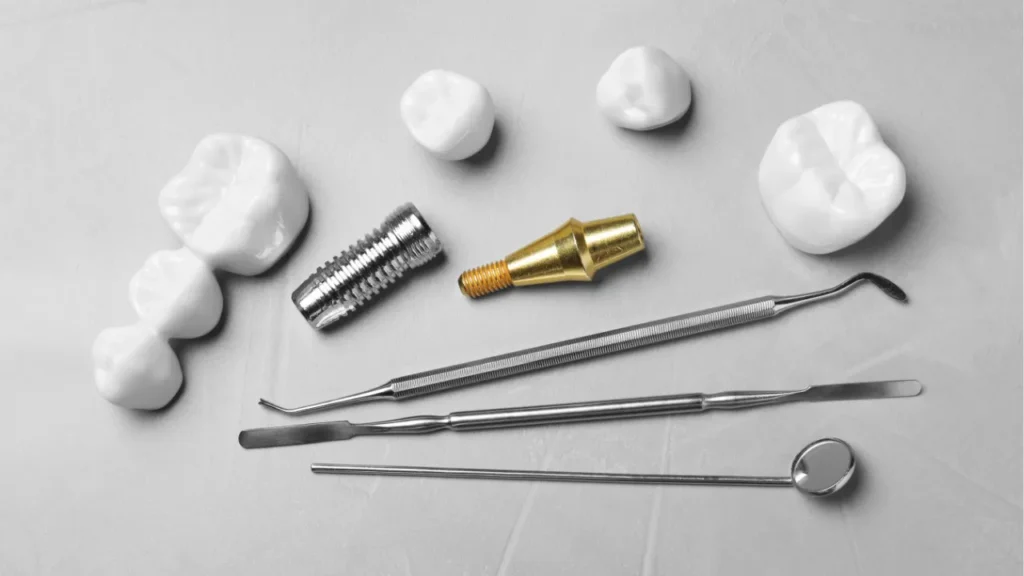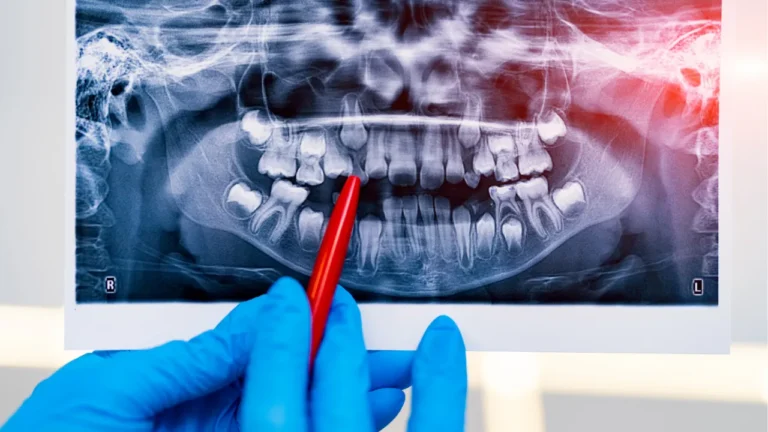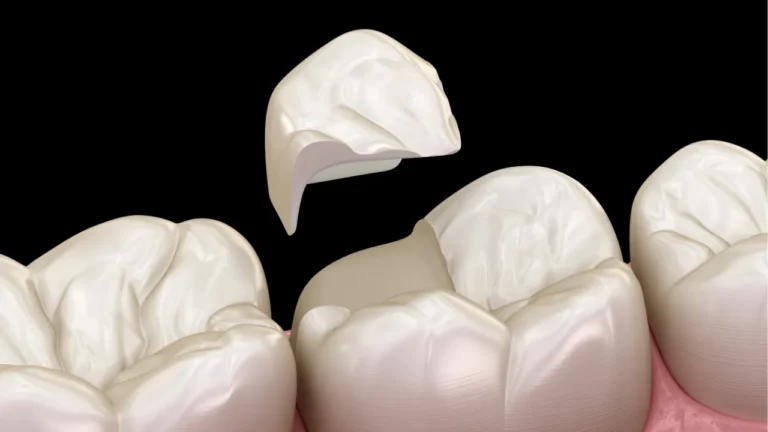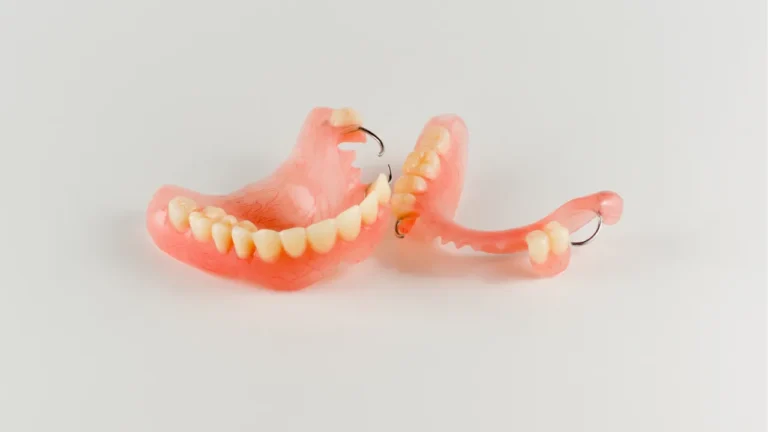Crowns, bridges, and implants are all solutions for restoring damaged or missing teeth — but they serve different purposes.
A crown covers and protects a damaged tooth, a bridge fills the gap left by one or more missing teeth using surrounding teeth for support, and a dental implant replaces a missing tooth entirely, including the root.
Understanding the difference can help you choose the best option for your oral health, lifestyle, and budget.
Quick Summary
- Crown: Restores and strengthens an existing damaged tooth.
- Bridge: Replaces missing teeth using neighbouring teeth for support.
- Implant: Replaces the whole tooth, anchored into the jawbone.
What Is a Dental Crown?
A dental crown is a cap that fits over a damaged or weakened tooth to restore its shape, strength, and appearance. Crowns are often used when a tooth is:
- Severely decayed
- Cracked or broken
- Worn down
- Treated with a root canal
The crown covers the entire visible part of the tooth above the gumline.
It protects the tooth from further damage and improves its function for biting and chewing.
Crowns can be made from materials such as porcelain, ceramic, or metal, depending on your needs and aesthetic preferences.
Ideal for: Strengthening and preserving a tooth that still has a healthy root.
What Is a Dental Bridge?
A dental bridge is used to replace one or more missing teeth. It “bridges” the gap between natural teeth using a false tooth (or teeth), called a pontic, supported by crowns placed on the adjacent teeth.
To place a bridge, the healthy teeth next to the gap must be reshaped and capped with crowns that anchor the bridge in place.
The pontic in between fills the space and restores your smile and bite.
Ideal for: Replacing one or more missing teeth when the surrounding teeth are healthy and strong enough to support the bridge.
What Is a Dental Implant?
A dental implant is a long-term solution for replacing a missing tooth. It consists of a small titanium post that is surgically placed into the jawbone, acting as an artificial tooth root. Once the implant integrates with the bone, a crown is attached on top to complete the restoration.
Dental implants look, feel, and function like natural teeth. They do not rely on neighboring teeth for support, making them a more conservative option in some cases.
However, they require sufficient bone and healthy gums to be successful.
Ideal for: Replacing a single tooth, multiple teeth, or supporting dentures in cases where long-term strength and stability are important.
Key Differences at a Glance
While we won’t use a table, here’s how they compare in a few words:
- Crowns restore damaged teeth.
- Bridges fill gaps between teeth using nearby teeth for support.
- Implants replace the entire tooth, including the root, and are anchored into the jawbone.
Which Option Is Right for You?
The right choice depends on several factors, including:
- The condition of your teeth and gums
- How many teeth are missing or damaged
- Your overall oral health
- Your budget and preferences
At Every Smile Dental, we take a personalised approach to every treatment plan.
We’ll assess your situation, explain all your options, and help you choose the solution that best fits your lifestyle and goals.







